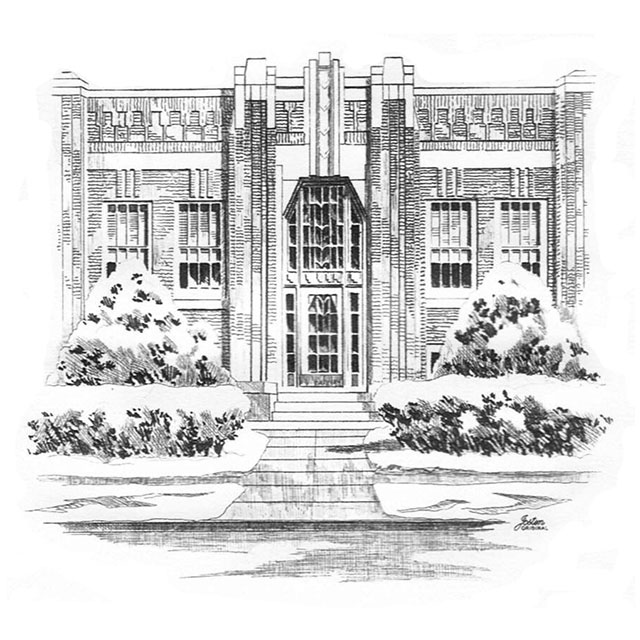Our story began over a century ago with the partnership of three families, the Pillsburys, Bennetts, and Longyears. United by the discovery of iron ore and words of honor, the partnership formally began in 1892. Various iron ore companies resulted from the partnership, and Meriden Iron Company was formed in 1903 to manage the family iron ore business. The name was later changed to Meriden Engineering. Through decades of patience and perseverance, the partnership weathered the boom and bust cycles of mining and endured through a deep sense of trust and commitment. Now in the third, fourth, and even fifth generation, the legacy continues and forges ahead into its second century as Superior Mineral Resources LLC.

The era of taconite, a hard rock containing magnetic iron oxide particles, brought giant new plants to the region and new prosperity for the land companies. Taconite was more plentiful than the nearly exhausted high grade, direct shipping natural ores that were being mined on the Mesabi.
By 1950, pilot plants were under construction by Erie Mining Company at Aurora, Reserve Mining Company at Babbitt, and U.S. Steel’s Oliver Iron Mining Company at Mountain Iron, all on the eastern end of the Mesabi.
By 1957, giant new plants were up and running at Silver Bay and Hoyt Lakes, Minnesota. These plants were expanded and provided enough capacity to satisfy the steel industry’s demand for taconite pellets into the mid-1960s.
By the early 1960s, with America’s escalating involvement in Vietnam, the economy shifted into high gear. The blast furnaces needed more pellets than existing plants in Minnesota and Michigan could supply, but steel companies were hesitant to invest the huge sums of money needed for new plants with the existing tax climate.
With the passing of the “Taconite Amendment” in 1964 establishing a more fair tax climate for taconite producers, steel companies immediately announced plans to build a “second generation” of taconite plants. These included National Taconite at Keewatin, Butler Taconite at Nashwauk, Eveleth Taconite at Eveleth, and the Minntac plant of U.S. Steel at Mountain Iron. In 1973, Bethlehem Steel and Pickands Mather built a plant near Hibbing called Hibbing Taconite Company.
The 1970s and 1980s brought recession and resurgence. 1982 saw America’s deepest economic downturn since the 1930s. The recession hit the Mesabi hard and at one point, all but two of eight mines were idle. In 1985, the Butler Taconite plant on the western Mesabi was shut down and completely dismantled. In 1986, Reserve Mining Company filed for bankruptcy and its operations at Babbitt and Silver Bay remained closed for four years before reopening under new ownership. The Mesabi Range eventually began to recover from the recession. Minnesota taconite pellet production began a steady rise from its 1982 low point. By 1990, it had climbed 86 percent to 43 million tons. By the time the new decade opened, it was clear that the mining industry was back on track. That same year, the Pillsbury-Bennett-Longyear interests celebrated their first 100 years. Remarkably, the interests are still held by the families of the founders.
The 1990s were a period of consolidation for the steel companies as they trimmed down and modernized to remain competitive with the ever increasing pressure of competing in the global market. Foreign ownership first came to the Mesabi taconite industry when for a time Nippon Kokan Corporation, one of Japan’s largest steelmakers, owned a 70% stake in National Steel Corporation, the parent of National Taconite. National Steel later filed bankruptcy, and in 2003, U.S. Steel purchased National Steel’s assets, including National Taconite, which U.S. Steel renamed Keewatin Taconite. This trend would continue as consolidations/mergers took place and plants fell under new ownership that often included foreign partners.
The Bennetts and Longyears led the development of the next generation of the iron ore business on Minnesota’s Mesabi Iron Range, spending more than a decade investing in the development of Minnesota Steel and the Direct Reduced Iron process, which is now being put to use both on the Iron Range and elsewhere. Direct Reduced Iron is used as an alternative feedstock in Electric Arc Furnaces and will aid in the transition to “Green” Steelmaking.
With growing demand in the U.S., and from countries like China and India, nonferrous exploration activity has greatly increased in Minnesota, Wisconsin, and Michigan. The target of this exploration is mainly platinum group metals, nickel, copper, and zinc.
In 2009, the families announced the formation of Superior Mineral Resources LLC to consolidate the holdings of their various companies into a single asset, beginning a new chapter in an enduring legacy, ready to meet the challenges of the next century with confidence, creativity, and growth.
(Much of this information is from the book Mesabi Miracle, The 100 Year History of the Pillsbury-Bennett-Longyear Association, by Peter F. Torreano)
